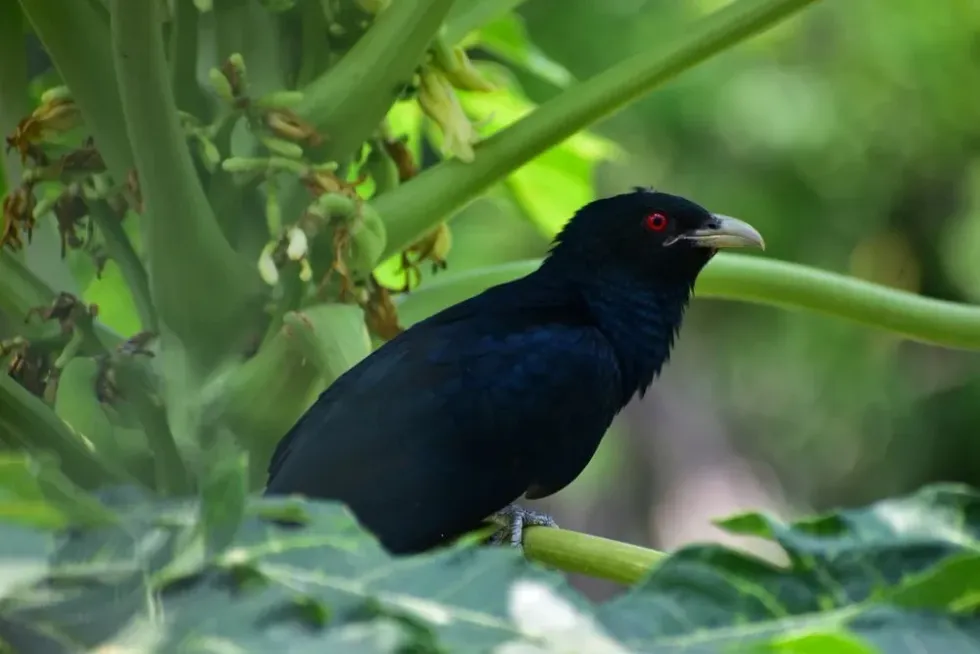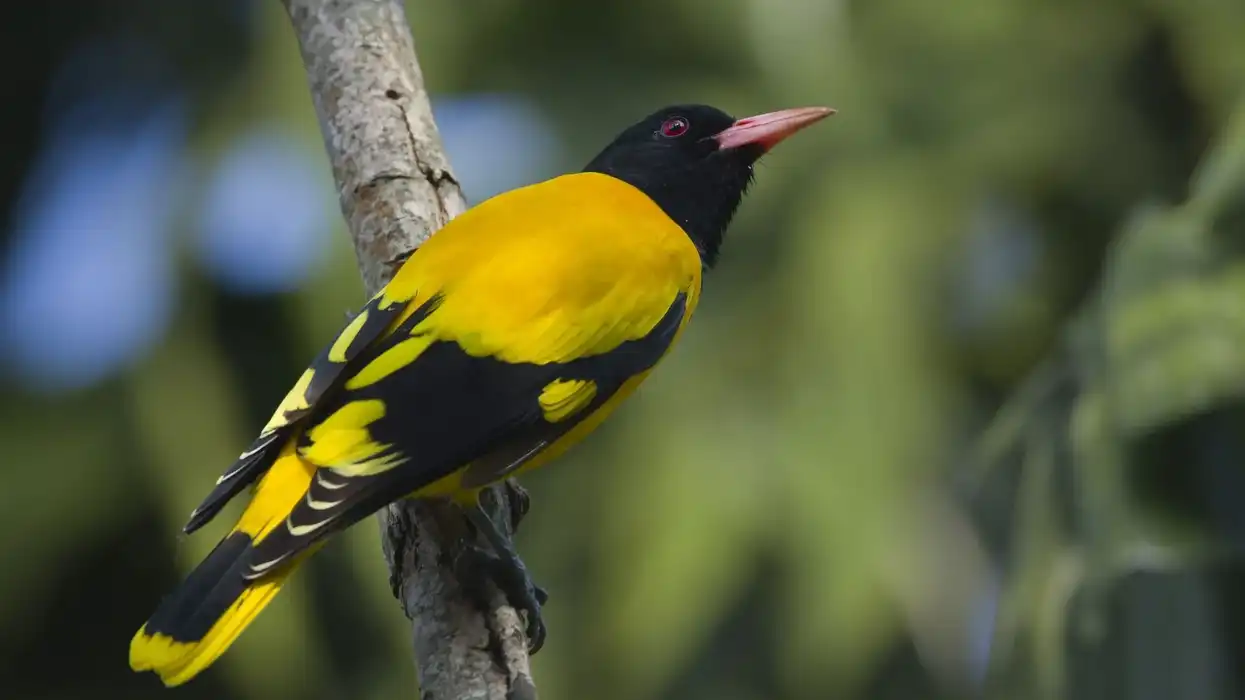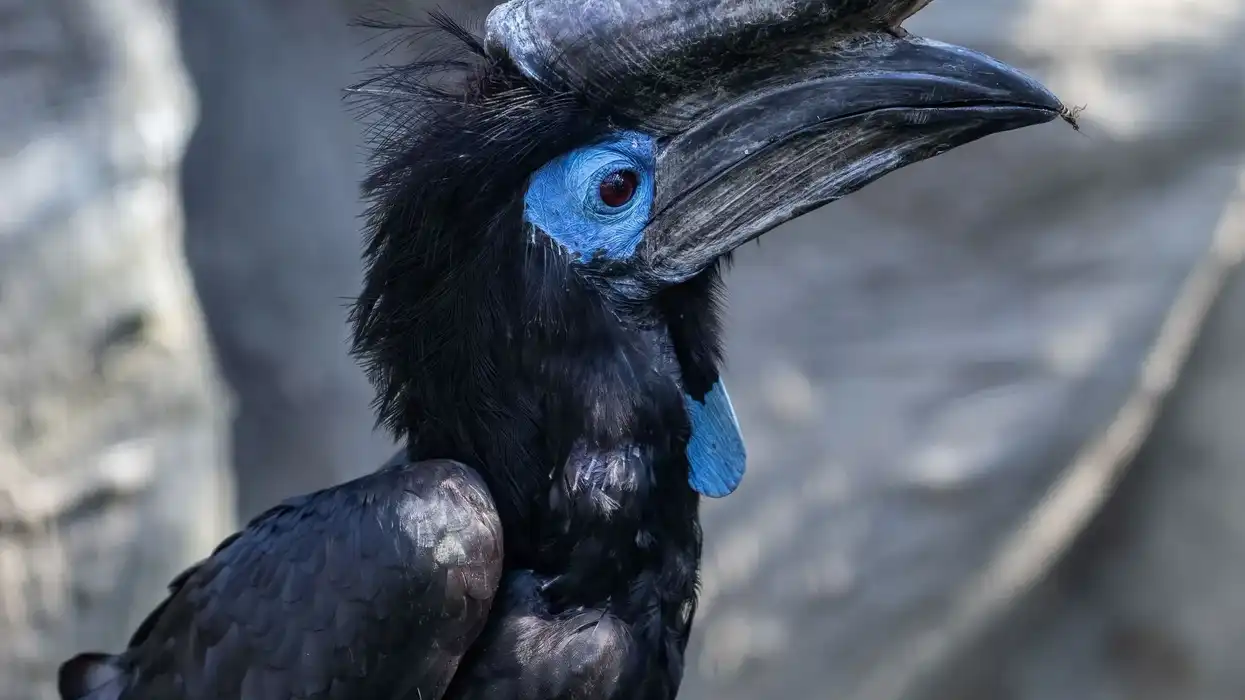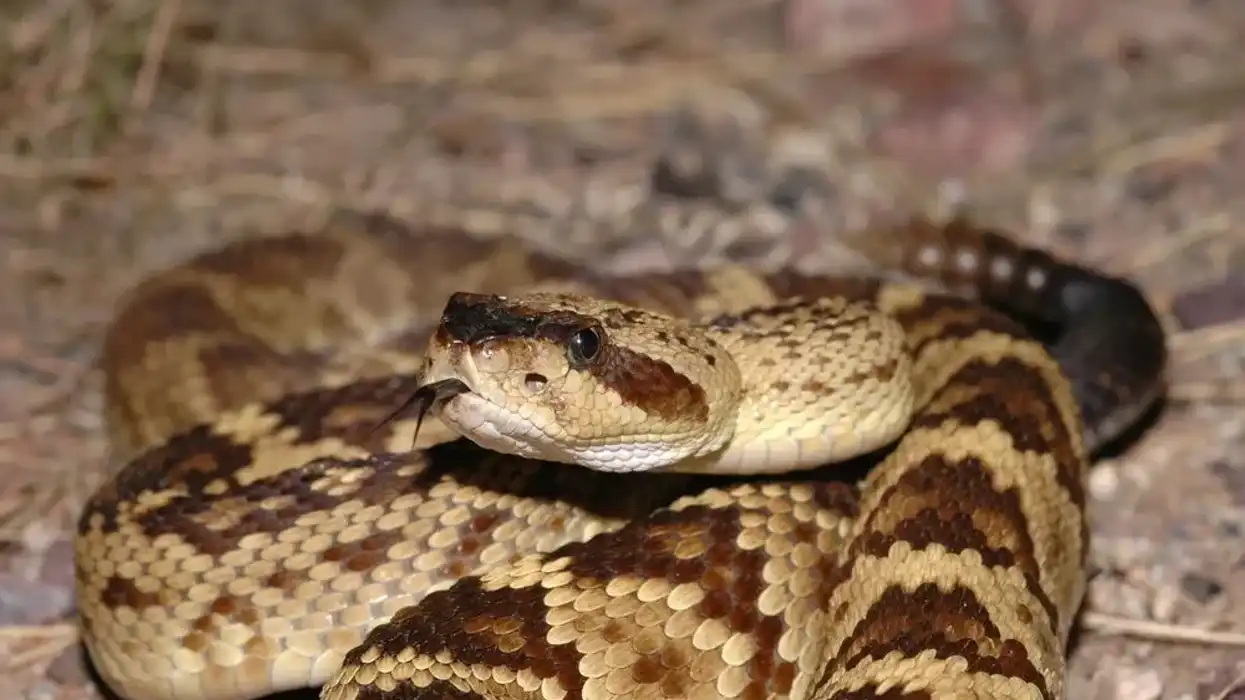The black cuckoo (Cuculus clamosus) is a medium-sized bird member of the cuckoo species of the family Cuculidae. The cuckoos are given this name because of their call 'cuck-oo.'
However, this call sound is only produced by males. The female's call sounds like the bubbling of running water out of a tub when the plug is removed. So, as the name suggests, the black cuckoo is glossy black.
They occupy a wide range of Sub-Saharan Africa. They are two subspecies of the black cuckoo, Cuculus clamosus clamosus and Cuculus clamosus gabonensis.
These two subspecies have varying plumage colors and occupy central and southern African woodland and forest. These cuckoo species migrate during the breeding seasons. The female lays her eggs in other bird's nests.
These female cuckoo species are known to feed on the eggs or chicks of their host. They are commonly found in protected regions, so the population does not face any conservation threat.
You may also like to learn about black-billed cuckoo and yellow-billed cuckoo facts.
Black Cuckoo Interesting Facts
What type of animal is a Black Cuckoo?
The black cuckoo (Cuculus clamosus) is of the Cuculus genus and Cuculiformes order. These medium-sized cuckoo species are brood parasites. These cuckoos lay eggs in other birds' nest before those birds lay their eggs. These bird species are Afrotropical.
What class of animal does a Black Cuckoo belong to?
The black cuckoo (Cuculus clamosus) belongs to the Aves class of animals.
How many Black Cuckoos are there in the world?
These bird species do not face conservation threats and they are spread across Africa. So, the number of these black cuckoo species is many but the exact number is unknown.
Where does a Black Cuckoo live?
The black cuckoo bird occupies a wide range of regions in Sub-Saharan Africa. The migratory Cuculus clamosus clamosus subspecies travel to South Africa during the breeding seasons from September to December and travel to East, West, and Central Africa in March.
The non-migratory Cuculus clamosus gabonensis subspecies are the natives and residents of Central Africa. The range of locations they occupy is Liberia, Ethiopia, Angola, and South Africa.
What is a Black Cuckoo's habitat?
The black cuckoo species is a woodland bird inhabiting acacia woodlands, thickets, riverside woodland, trees, and plantation around villages. They avoid the interior dense forest.
Who do Black Cuckoos live with?
These birds live on their own or with the mating partner during the breeding season.
How long does a Black Cuckoo live?
The lifespan of the black cuckoo birds has not yet been recorded.
How do they reproduce?
Only the Cuculus clamosus clamosus migrate during the breeding season. As these birds are brood parasites, the primary hosts of these species are bushshrikes like crimson-breasted shrike and tropical boubou.
The females lay eggs in the nest of one of these hosts. It was observed that the females even replace their eggs by removing the host's eggs.
The host birds incubate the eggs thinking it is one of the eggs. November to December is the peak season for egg-laying. The females produce a clutch of four eggs every two days, producing a total of 22 eggs per breeding season.
After hatching the young chicks removes any existing eggs of the hist from the nest. These chicks stay in the nests for about 21 days and they become independent around 39-64 days.
What is their conservation status?
The conservation status of these cuckoo species is the Least Concern.
Black Cuckoo Fun Facts
What do Black Cuckoos look like?
The description of these cuckoo birds is quite simple as most of the birds of these species are black in color. These are medium-sized birds. The description, especially of the plumage, differs between the subspecies.
The Cuculus clamosus gabonensis subspecies are black and have red throat with a white and black bar on the belly. The Cuculus clamosus clamosus subspecies have a black upper body part with a black tail that has a white tip. The wings are green, slatey-gray and sometimes the outer feathers are barred or spotted.
How cute are they?
These cuckoo bird species are mostly found in black. So, they are generally not considered as cute birds.
How do they communicate?
The typical call sound of a cuckoo bird is 'cuk-oo.' The males normally use this call sound. The female's call is more like a water bubbling sound. The call varies from one species to other in the cuckoo family.
How big is a Black Cuckoo?
The black cuckoos are 12.2 in (31 cm) long.
How fast can a Black Cuckoo fly?
The flight speed of the black cuckoo bird species is not available. However, these species are not known for great flight speed but for flight range.
How much does a Black Cuckoo weigh?
The data on the weight of the black cuckoo is not available.
What are their male and female names of the species?
There is no specific name given to the male or the female birds.
What would you call a baby Black Cuckoo?
There is no specific name given to a baby black cuckoo bird.
What do they eat?
The main diet of these birds includes hairy caterpillars. The female bird's diet sometimes consists of the eggs and chicks of their hosts. Beetles, termites, grasshoppers, ants, and nestlings are also a part of their diet.
Are they dangerous?
No. These birds are not dangerous to humans.
Would they make a good pet?
No, they would not make a good pet as they are wild animals. In fact, in many regions, it is illegal to have a pet cuckoo bird.
Did you know...
The earliest record of a cuckoo bird was on 20 February 1953 in Surrey, England.
There only two species of the 54 cuckoo species living in Europe.
In 1820, the English zoologist William Elford Leach introduced the family Cuculidae in a guide that is present in the British Museum.
The cuckoo symbolizes many things in different cultures. In Greek mythology, a cuckoo bird is referred to as the sacred goddess Hera. In Indian mythology, the cuckoos are sacred to Lord Kamadeva, god of longing and desire. The cuckoo represents unrequited love in Japan. The cuckoo is referred to as spring in Europe.
Is a Cuckoo the same as a Koel?
Yes, a Koel is species that belongs to the Cuckoo (Cuculidae) family. The Koels are large sexually dimorphic cuckoos.
Is a Black Cuckoo the same as a Black-billed Cuckoo?
No. A black Cuckoo (Cuculus clamosus) is not the same as a Black-billed Cuckoo (Coccyzus erythropthalmus). The Black-billed cuckoo belongs to the genus Coccyzus whereas the black cuckoo is of the Cuculus genus.
The black-billed cuckoo is brown and white-colored with a black bill whereas the black cuckoos are mostly black.
The black-billed cuckoos are spread across the United States whereas the black cuckoos occupy sub-Saharan Africa.
The black-billed cuckoo was first placed in the Cuculus genus which consists of old-world cuckoos. After more research, the black-billed cuckoo was put in the Coccyzus genus which has new-world cuckoos. The black-billed cuckoo is closely related to the yellow-billed cuckoo.
Here at Kidadl, we have carefully created lots of interesting family-friendly animal facts for everyone to discover! Learn more about some other birds including the secretary bird, or house finch.
You can even occupy yourself at home by drawing one on our Black cuckoo coloring pages.










